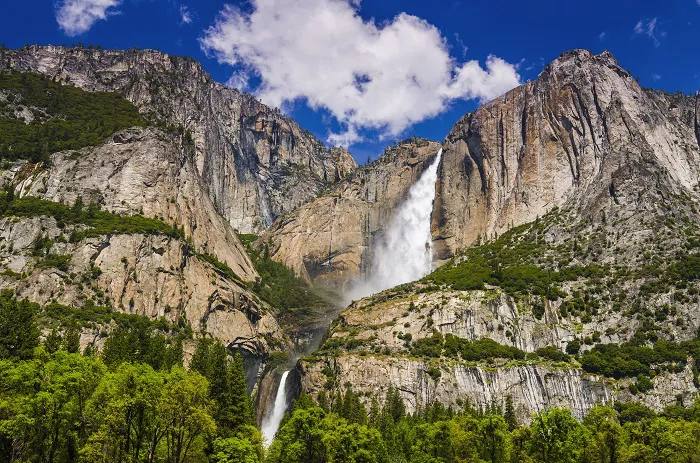The U.S. National Park Service, long celebrated as a cornerstone of American environmental stewardship, is experiencing what employees describe as a devastating crisis under the second Trump administration. With sweeping staff reductions, restrictive administrative policies, and a culture of fear taking root, career professionals warn that the agency’s capacity to protect and manage over 85 million acres of public lands is rapidly deteriorating.
Mark Nebel, a veteran geoscientist who managed geological and environmental programs at Grand Canyon National Park for 15 years, resigned early amid mounting frustrations. Nebel had intended to work at least another five years, contributing to critical research and climate monitoring in one of the world’s most iconic natural landscapes. Instead, he left his post abruptly, citing impossible working conditions imposed by political operatives embedded within the agency.
“They made it impossible to do agreements with outside organizations, uphold contracts, purchase the tools we needed or send samples out to a lab for analysis,” Nebel explained. “And we were supposed to stop talking about climate change.”
Nebel’s experience is emblematic of a broader reckoning within the National Park Service (NPS). Interviews with over a dozen current and former employees reveal an agency besieged by severe funding cuts, top-down micromanagement, and what some describe as ideological sabotage. The Department of Government Efficiency (Doge), a Trump-era initiative aimed at rooting out “waste, fraud, and abuse,” has become a disruptive force, exerting broad administrative control and reshaping the agency’s internal culture.
According to the National Parks Conservation Association, more than 2,500 full-time NPS positions—approximately 13% of the workforce—have been eliminated since January. These reductions include probationary dismissals, voluntary retirements, and deferred resignations, disproportionately impacting senior staff. A federal judge recently blocked an additional 1,500 layoffs, offering a temporary reprieve. Nonetheless, operational instability and leadership vacancies persist across the park system.
The consequences are already visible. Staff shortages at the Grand Canyon led to waived entrance fees during peak periods, while five of ten campgrounds in the Great Smoky Mountains remain closed. In Yosemite, half the senior management roles are unfilled, and a hiring moratorium briefly left scientists scrubbing bathrooms due to a lack of seasonal workers. In Alaska, just one employee is now responsible for overseeing cultural and archaeological preservation across more than 50 million acres.
Former National Park Service Director Jonathan Jarvis, who led the agency under President Barack Obama, warned that the current trajectory bears a chilling resemblance to early missteps he observed during China’s formation of a national park system. He described a model of “facade management,” where surface appearances mask environmental degradation.
“We are headed toward facade management,” Jarvis said. “This is their chance to kill the golden goose.”
The Trump administration has proposed slashing the NPS budget by more than $1 billion for 2026—a nearly 25% reduction that would represent the largest cut in the agency’s 109-year history. The administration is also exploring the transfer of some park sites to state control, effectively shrinking the federally managed system.
Interior Secretary Doug Burgum has appointed former oil executive Tyler Hassen to oversee broad operations within the department, intensifying fears among staff. In public statements, Burgum downplayed the impact of the cuts, framing them as efforts to enhance “customer-facing services.”
But internal morale is collapsing. Employees describe a hostile work environment fueled by demeaning internal communications and bureaucratic interference. Routine tasks such as research coordination, contracting, and equipment procurement have been bogged down by Doge’s approval requirements and political constraints—including prohibitions on terms like “climate change” and “diversity, equity, and inclusion.”
One anonymous biologist overseeing endangered species recovery described how the uncertainty has crippled fieldwork and conservation efforts. “If we are no longer able to protect the habitat in this park, we could quickly lose an entire species,” she warned.
Other scientists echoed concerns, particularly about the administration’s move to roll back critical habitat protections under the Endangered Species Act. The Scientists in Parks program, which connects students and early-career scientists with park-based research opportunities, is among dozens of initiatives now slated for elimination.
The erosion of tribal partnerships is another point of contention. Progress made under President Biden—including the appointment of Chuck Sams, the first Indigenous director of the NPS—has been sharply reversed. Staff reductions have gutted the tribal liaison program, with national offices reportedly shrinking from dozens of staff to fewer than five.
“It seemed like the park service was moving into a new era of co-management with tribes,” said one Indigenous employee. “But now everything has changed. Like all minorities, we have once again become second-class citizens.”
Amid this institutional upheaval, park advocates question the administration’s logic. With parks contributing billions to rural economies through tourism and job creation, the cuts appear to undermine the very communities the administration claims to support.
“There are ideologues who want to dismantle the federal government,” said Jarvis. “And the last thing they need is a highly popular federal agency that undermines their argument about how the government is dysfunctional.”
Despite the mounting pressures, many park employees remain defiant.
“This is not a job for us,” one longtime staffer said. “It is a calling.” The same employee summed up the prevailing attitude among resilient staff: “Keep calm and ranger on.”


